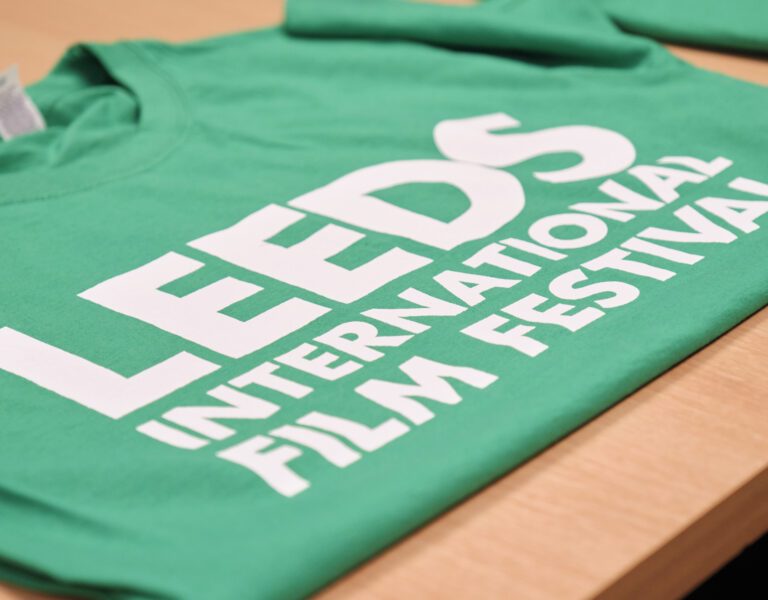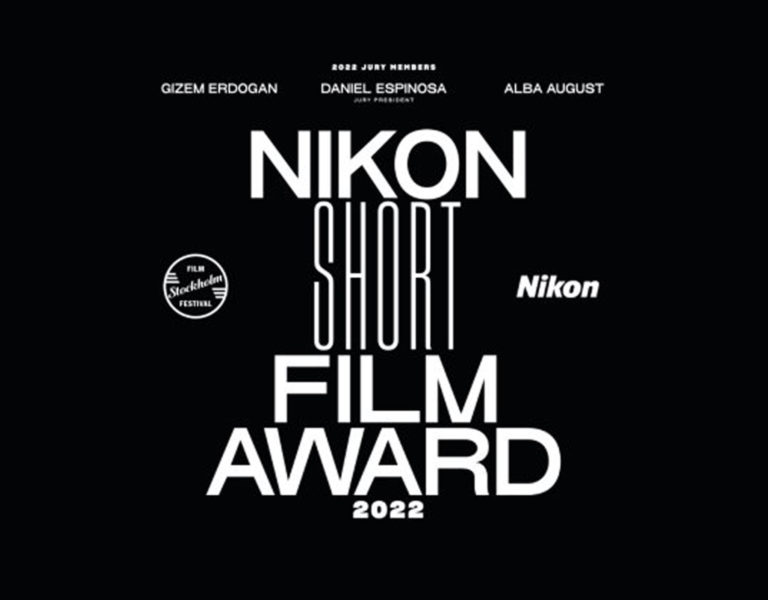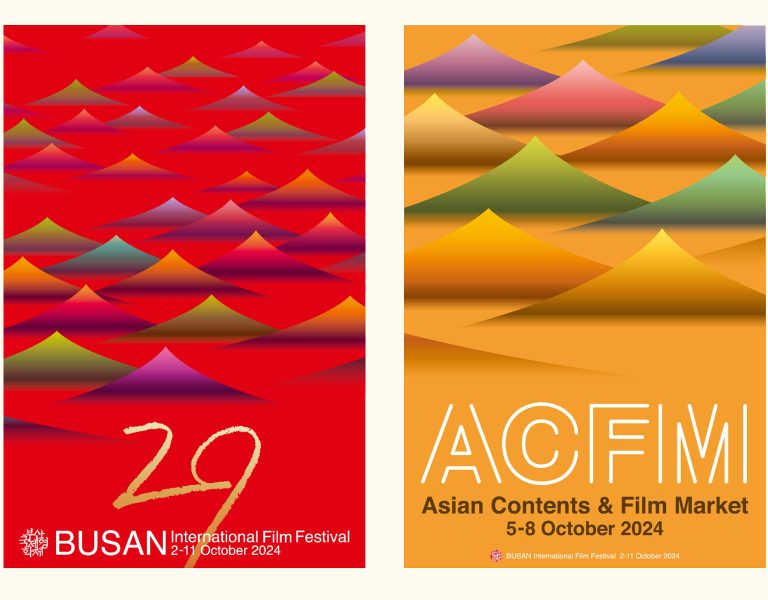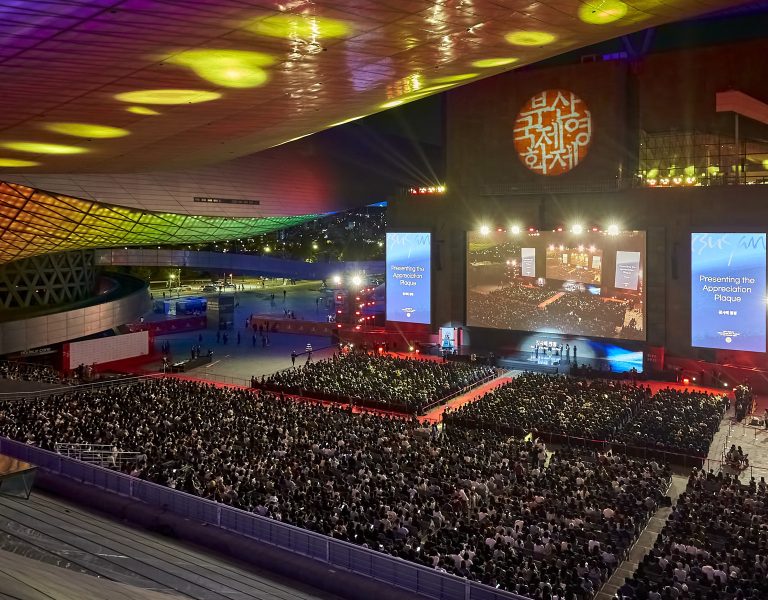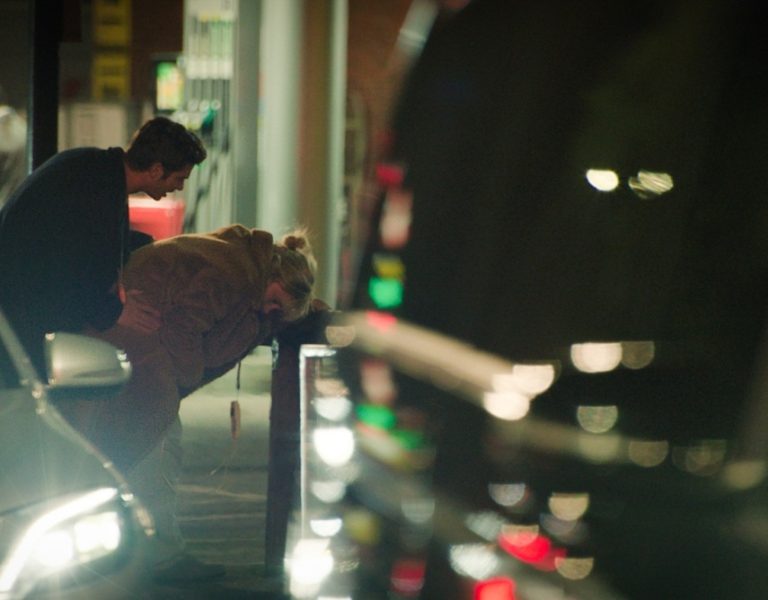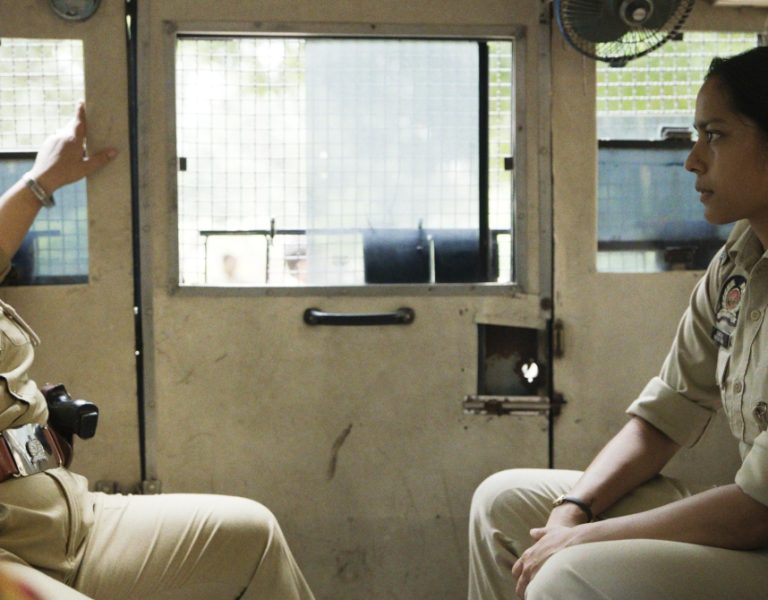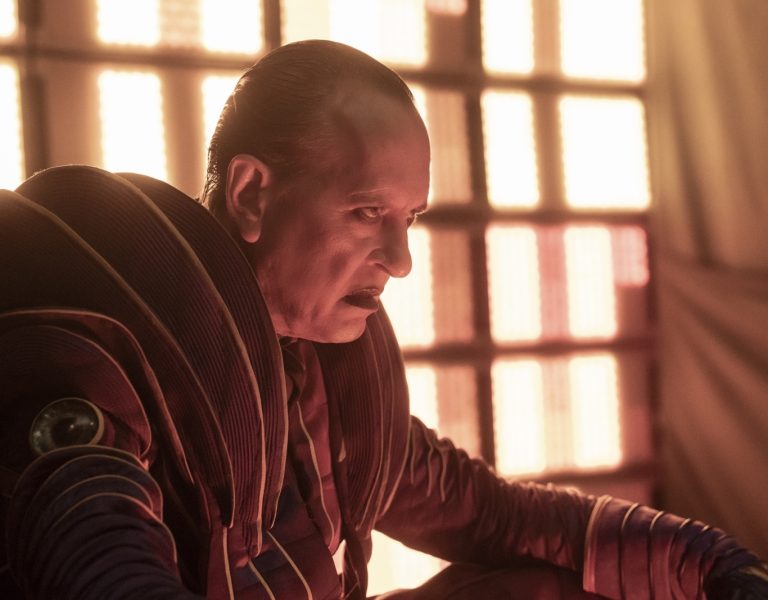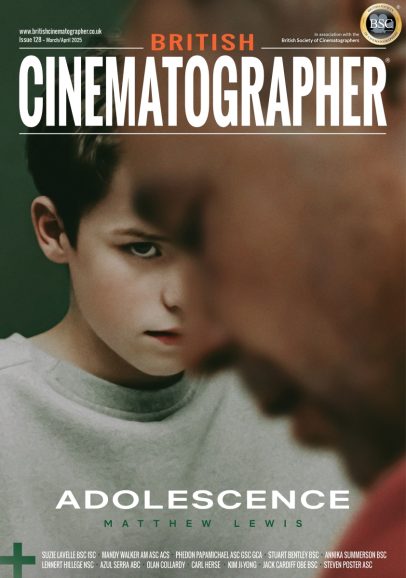SILVER SCREEN SUPREME
Known as Hollywood’s playground, Palm Springs was always a magnet for the rich and famous. It’s also home to a stellar event celebrating standout production. Madelyn Most reports from the 36th Palm Springs International Film Festival and a packed programme of screenings, Q&As and awards.
Sonny Bono (of Sonny & Cher fame) founded the first film festival in Palm Springs in 1989 when he was the (Republican) Mayor of the town. Now, in its 36th year, the Palm Springs International Film Festival 2025 kicked off on 2 January and concluded on the 13th, attracting more than 150,000 film enthusiasts. Mayor Ron de Harte, proud Latino and President of the Greater Palm Springs Pride and Chair of the Palm Springs Human Rights Commission, is the first openly gay Mexican-American Mayor who says: “Saludos Amantes del Cine” (Greetings Film Lovers). I’m delighted to welcome you to one of the largest, most respected, star- studded film festivals in North America.” And it certainly was.
Only a two-hour drive from Los Angeles, the voyage eastward takes you north past the snow covered San Bernadino mountains, then drops down to the Coachella Valley, (home to the largest music and art festival in the world), just before approaching the expansive Joshua Tree National Park. These arid sandy deserts are part of the tribal Lands of the Cahuilla Indians who inhabited the area from 5000 BCE and 500 CE; almost 7,000 acres of the Agua Caliente Indian Reservation, founded in 1876, are in Palm Springs itself. They are the tribe’s headquarters and the tribe is the city’s largest collective landowner.
Approaching the palm tree lined avenues of city, in the distance you can see Mount San Jacinto and the Santa Rosa Mountain ranges. A dryness tickles your throat, the laser sunlight burns your skin, heat waves blur the horizon into a mirage, and the intensely bright cobalt blue sky makes your eyes squint. By mid-afternoon during winter, the rays of light are blocked by the jagged Little San Bernadino Mountains that touch the northern city limits and long shadows darken the streets.
Palm Springs, known as Hollywood’s playground, was always a magnet for the rich and famous. Hollywood celebrities working under studio contracts were required to remain within a two hour distance in case of any unforeseen circumstance when they would be called back to set for retakes or to complete filming. In the 1920s, ‘30s, ‘40s and ‘50s, this historical landmark was the home-getaway-dwelling-retreat-hideaway-sanctuary to many silver screen legends like Clara Bow, Greta Garbo, Mary Pickford, Clark Gable and Carole Lombard, Lucille Ball and Desi Arnaz, Spencer Tracy, Elvis Presley, Bob Hope, Cary Grant, Gene Autry, Roy Rogers, Marilyn Monroe, William Powell, Frank Capra, Darryl Zanuck, Shirley Temple, Frank Sinatra and Ava Gardner, Rita Hayworth, Kirk Douglas, Dean Martin, Sammy Davis Jr., Elizabeth Taylor to name a few. They could seclude themselves from the spotlight and the gossip columnists always searching for a scoop or a scandal. Even today, Palm Springs attracts A-listers for the same reason.
On the surface, this resort town of luxury homes, swimming pools, tennis courts, golf courses, iconic hotels, restaurants, and casinos appears to be populated by a predominately elderly, white, affluent, conservative, community, but not the locals I met who were animated and curious, asking where you live, what you do, what’s your accent? They were knowledgeable, well versed and opinionated about classic films and foreign films and the latest trendy directors. They mentioned some trepidation and unease with the rapid changes in the political climate and what might soon be coming. A description of Palm Springs I found on the internet reads: “known to be a very blue city in the middle of a red county in one of the bluest states in the nation- large LGBTQ population”.
Listening to the buzz of the audience armed with cappuccinos and Chai Lattes while awaiting the lights to dim for the 9:30am screening, I overheard an octogenarian on her cell phone explain to her plumber that she would be unreachable this week as they attend four films per day, finishing up after 10pm. These 70, 80, even 90-year-olds keep active, healthy, more youthful and in good shape in this hot climate where temperatures in summer can reach over 115 degrees Fahrenheit (46.1 Celsius); silver haired gentlemen trundle through downtown in their golf buggies and well dressed women of a certain age socialize at the private tennis clubs that also provide a famous restaurant, pool, hot tub, and gym.
Reid D. Milanovich, Chairman of the Tribal Council of the Agua Caliente Band of Cahuilla Indians, greeted the festival goers with “Me Yah Whae” (Hello). “On behalf of the Agua Caliente Band of Cahuilla Indians, it’s my pleasure to officially welcome you to the annual Palm Springs Film Festival”. The Tribe and the city was named for the Agua Caliente Hot Mineral Spring and its newly opened State of the Art Spa is called < Se’c- he > which means ‘the sound of boiling water’ in the Cahuilla language. It is a cultural heritage destination where Tribal members and guests celebrate the history, culture, traditions and modern life of the tribe. “Our beautiful Tahquitz Canyon had a starring role in Frank Capra’s 1937 Lost Horizon featuring Ronald Coleman and Jane Wyman, and the Indian Canyons, that are part of our ancestral homes have, for decades, provided the scenic backdrop and landscapes for the film industry,” he adds.
The PSIFF Chairman, Nachhattar Singh Chandi, proudly announced the annual Film Awards Gala on 3 February would honour many of this year’s Academy Award nominees including Cynthia Erivo, Angelina Jolie, Adrian Brody, Ariana Grande, Timothee Chalamet, Nicole Kidman, Denis Villeneuve, Isabella Rossellini, Ralph Fiennes, Jamie Lee Curtis, Jesse Eisenberg, and Kieran Culkin, who posed on the red carpet before television cameras and the international press, as thousands of elegantly dressed guests lined up at the city’s Convention Center, happy to have paid over a thousand dollars to celebrate their favourite celebrity pick up an award…and because it is all for a good cause. The Awards Gala raises funds to subsidize the year-round activities of the non-profit Palm Springs International Film Society. This year’s Gala brought in more than two and a half million dollars!
The Vanguard Award went to Karla Sofia Gascon, Zoe Saldana, Selena Gomez, Edgar Ramirez for Emilia Perez. The Spotlight Award went to Colman Domingo (Sing Sing). The Breakthrough Performance Award went to Mikey Madison (Anora). The Desert Palm Achievement Award went to Adrien Brody (The Brutalist). The Ensemble Performance Award went to the cast of Conclave: Ralph Fiennes, Isabella Rossellini, Stanley Tucci, John Lithgow, Lucian Msamati. The Visionary Award went to Denis Villeneuve (Dune Part Two). The Rising Star Award went to Ariana Grande (Wicked). The Chairman’s Award went to Timothee Chalamet (A Complete Unknown). The International Star Award went to Nicole Kidman (Babygirl). The Breakthrough Performance Award went to Kieran Culkin (A Real Pain). The Desert Palm Achievement Award went to Angelina Jolie (Maria).
By definition, the mission of every film festival is to “engage, arouse, challenge, inform, provoke, entertain, shock and/or outrage the spectator, in order to broaden the mind, lift the spirit, warm the heart, challenge any preconceived ideas, beliefs and viewpoints… in other words, to force the audience out of their comfort zone. The PSIFF accomplished just that.
The slate of films – 165 films from over 71 countries including 68 premieres, was made up of five films from Africa, 30 from Asia, 55 from Europe, 10 from Latin America, 13 from the Middle East, 70 from North America and 6 from Oceania. They are programmed under various categories: Talking Pictures, Book to Screen, Queer Cinema Today, Special Presentations, Local Spotlight, Focus on Spain, Awards Buzz, Modern Masters, New Voices New Visions, American Indies, True Stories, and World Cinema Now. (I sought out the titles from Tahiti, Bulgaria, Mongolia, Palestine, Cambodia, Georgia, Iran, Zambia, Qatar, Nepal).
Festival highlights
Having seen it previously on a computer screen, watching Emilia Perez on a big screen among hundreds of people was thrilling. It was followed by a discussion with director Jacques Audiard and actors Karla Sofia Gascon, Zoe Saldana, Selena Gomez, and Edgar Ramirez. Karla Sofia Gascon delivered a heartfelt emotional, even tearful speech that brought the audience to its feet in a standing ovation. She touched her heart and bowed her head in appreciation. Little did we know what would unravel in the weeks that followed when her internet posts from the past were exposed for all the world to see.
The most impressionable documentaries were From Ground Zero and No Other Land.
One of the most frightening films was Meeting with Pol Pot. A trip back into the folk music scene and the socio-political climate of the 1960s brilliantly unfolded in Varda Kar’s documentary Janis Ian: Breaking Silence.
Homegrown was particularly disturbing to watch. In 2018, director/cameraman Michael Premo and producer/sound recordist Rachel Falcone began filming three right wing activists travel around America campaigning for Donald Trump, to build what is known as the Patriot movement. Convinced that the election was stolen, they take their fight and their weapons to the streets. Imbedding themselves alongside members of the Proud Boys and Oath keepers, and culminating in the January 6th storming of the Capitol Building, the filmmakers themselves got tear gassed and were physically injured in the rioting. The film’s main characters are now in prison for their crimes but Falcone said they believe they will be pardoned and released. I asked her if they would they would be making a follow up documentary in the event they are released, but she could not answer. The film had so dramatically impacted her life and taken a toll on her health.
Bruce David Klein’s documentary Liza: A Truly Terrific Absolutely True Story is something I’ve been anxiously awaiting to see and is a very good effort but I felt deflated afterwards by what could have been so much more. The film is structured in different chapters and relies on a trove of archival footage recently discovered and delivered to Minelli herself, that she in turn, turned over to Klein. There was too little material with those who worked with this tremendously hard working trooper who began her career as a child. It is always difficult to make a documentary about someone while they are still alive knowing they will see and judge the final outcome, but it takes patience to listen to opinions from admirers, film school professors or cinema historians who did not personally know the person they are talking about, and they certainly never have worked with her. Moreover, it ruined my planned segway into a discussion about Geoffrey Unsworth’s cinematography on Cabaret, as Peter Macdonald, (camera operator on Cabaret) was sitting next to me.
Cabaret is not only one of the greatest musicals ever made, it is also Liza Minelli’s greatest achievement on film. Director Bruce Klein is genuine, very talented, and humble, and after the screening, he asked Peter if he thought the film was truthful and honest, which it was. I had watched the film several times and on the third viewing, decided I like it very much, but it could and should be much longer.
Walter Salles’ I’m Still Here is one of the great films this year, it was a packed audience who were enthralled by the performances and history. The word to best describe this film is “bouleversant” – deeply moving, shattering, astounding.
Watching Hard Truths on a big screen with an audience was a total revelation. Having viewed it months before on my laptop sitting alone in the dark, I confess the story completely alluded me. I did not understand the complexity of the characters or their struggles, so it was an awakening to sit among an audience rocking with laughter and then suppressing muffled gasps. During the Q&A with Mike Leigh, Marianne Jean-Baptiste and Michele Austin, questions were raised about mental health issues that arose during and after covid, ADHD, autism spectrums, a neurodevelopment conditions and other disorders. The moderator asked Mike Leigh how the death of Dick Pope BSC is affecting him. After telling the audience about Dick Pope’s life and work in documentaries and making films about real life, he softly added, “It is an enormous loss. I’ve worked with Dick since Life is Sweet in 1990. He was a great cinematographer and collaborator, a great artist. On every film we were able to discuss the mood and then find something quite special for the look of the film. He was great working with the actors. A tremendous loss.”
Blue Road- The Edna O’Brien story is a magnificent documentary, as is Checkpoint Zoo from Ukraine. Flow, September 5, The Last Showgirl were powerful to watch on a big screen. Palm Springs is known to have a large diverse community and Queer Cinema is the strand that presented Desire Lines, Bun Tikki, Drive Back Home, Four Mothers, I’m Your Venus, A House is Not a Disco, and Misericordia.
This year’s Country Focus was on Spain presenting the classic Spirit of the Beehive, Viridiana, Jamon Jamon, The Orphanage, Death of a Cyclist, Arrebato, The Others, Welcome Mr. Marshall. The Director Focus was on Pedro Almodovar and the retrospective included Talk to Her, All About My Mother, Matador, and The Room Next Door.
The ‘Talking Pictures: Book to Screen’ program explores the relationship between the written work and its cinematic adaptation. Authors, screenwriters, and directors were invited to discuss how their stories made their way to the screen.
‘New Voices, New Vision’ is the strand for first or second time feature film directors that presented To A Land Unknown, Bonjour Tristesse, The Year that Never Came, and Don’t Let’s Go to the Dogs Tonight, and Hanami.
The Modern Masters section screened Hard Truths by Mike Leigh, Parthenope by Paolo Sorrentino, Presence by Steven Soderbergh, Never Alone by Klaus Haro, A Traveller’s Needs by Hong Sangsoo, and When Fall is Coming by Francois Ozon.
American Indies are a selection of the latest independent voices and True Stories presents Non- fiction filmmaking that included stories from Ireland, UK, Ukraine, Brazil, Canada, Bhutan, Hungary and the USA. Jean Cocteau, Mistress Dispeller, No Other Land, My Sweet Land, Schindler Space Architect , Sabbath Queen, A Sudden Glimpse to Deeper Things from Mark Cousins, Transfers from Argentina, Zurawski V. Texas, Whatever it Takes, Walk with Me are all films to look out for.
And the winners of the Palm Springs International Film Festival are :
FIPRESCI Prize : BEST INTERNATIONAL FEATURE FILM
I’M STILL HERE
Directed by: Walter Salles
FIPRESCI: BEST INTERNATIONAL SCREENPLAY
VERMIGLIO
Directed by: Maura Delpero
FIPRESCI: BEST ACTRESS IN AN INTERNATIONAL FILM
Zoe Saldaña for EMILIA PÉREZ
Directed by: Jacques Audiard
FIPRESCI: BEST ACTOR IN AN INTERNATIONAL FILM
Mo Chara, Móglaí Bap, and DJ Provái for KNEECAP
Directed by: Rich Peppiatt
YOUNG CINEASTES AWARD
TATAMI
Directed by: Zar Amir Ebrahimi, Guy Nattiv
Special Mention: SUPERBOYS OF MALEGAON
DESERT VIEWS AWARD
CHECKPOINT ZOO
Directed by: Joshua Zeman
Special Mention: DESERT ANGEL
BRIDGING THE BORDERS AWARD
SOULEYMANE’S STORY
Directed by: Boris Lojkine
Special Mention: HAPPY HOLIDAYS
NEW VOICES NEW VISIONS AWARD
THE NEW YEAR THAT NEVER CAME
Directed by: Bogdan Mureșanu
Special Mention: DON’T LET’S GO TO THE DOGS TONIGHT
BEST DOCUMENTARY AWARD
NO OTHER LAND
Directed by: Yuval Abraham, Basel Adra, Hamdan Ballal, Rachel Szor
Special Mention: BLUE ROAD – THE EDNA O’BRIEN STORY
IBERO-AMERICAN AWARD
SUJO
Directed by: Astrid Rondero, Fernanda Valadez
Special Mention: MANAS
